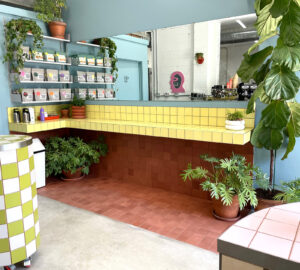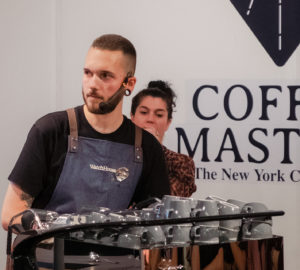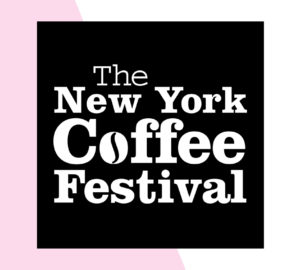
It’s hard to believe that Brooklyn Kura is New York City’s first saké brewery and tap room but owners Brandon Doughan and Brian Polen are proud to be on the vanguard. The space, which opened in January 2018, hopes to lead the crowds—that is, if Doughan and Polen have anything to say about it.
In Brooklyn and beyond, the founders wondered, why aren’t many Americans drinking and ultimately making their own saké? In response to this void, Brooklyn Kura is sounding the klaxons on American craft saké, within its sleek tap room space in Industry City—a purpose-built industrial park for makers in Brooklyn’s Sunset Park neighborhood.
Upon entering the tap room, visitors are greeted by Polen, Doughan, or one of Brooklyn Kura’s saké sommeliers: Sam Barickman and Nana Paturet. The ultra-knowledgeable and approachable staff serves a customer base that varies widely. Says Barickman, “We get a good amount of Japanese tourists that have either seen us on Japanese TV or read about us on the airplane here. They’re often excited to try American-made saké. I’d say about once a week we get someone who has never had saké before in their life, which is very exciting and I’m very honored that people feel comfortable enough to come into a space like this and learn.”
I caught up with co-owner Brian Polen to talk about their saké, the tap room, and uptake of craft saké culture.

Sprudge: Hi Brian. Thank you for speaking with me! How did Brooklyn Kura come to be?
Polen: Brandon [Doughan] and I met at a mutual friend’s wedding in Japan in 2013 and traveled together after the wedding. Brandon’s been brewing for years and is a biochemist and we were overwhelmed, really, by the quality, availability, and affordability of saké everywhere we went. One of the main questions we had, knowing nothing about the industry at the time, was why weren’t people making this fantastic drink in the U.S., given the popularity of craft and local [food and drink], and it was surprising that outside of a brewery in Portland, Saké One, we really hadn’t heard of saké being produced in the U.S. We wondered “can we make this stuff and will it taste good?”
So we started making saké at home. It wasn’t a very ambitious start, but the quality of what we produced was better than we expected! And then we continued to romance the idea of breweries in the U.S.—I pretty quickly came to learn that 80% of the saké that is consumed in the U.S. is actually made in California by four mega-breweries. Those breweries are Japanese-owned and produce a range of qualities, but primarily table saké. It’s ubiquitous. It’s in every corner Japanese restaurant, typically served warm. A little bit more astringent and not necessarily the best reflection of saké’s potential. We continued to make saké in our respective corners of the U.S. and put plans together to build a brewery. We started the company formally in January 2016 and we left our jobs in earnest in September of 2016.
Are you inspired by any particular approach?
I think we’re pretty inspired by the American craft beer ethos: this idea of collaboration, experimentation, and quality. So we as a company are trying to embody that in the way we both make saké and the way we interact with consumers and potential home brewers. So I think that’s number one. Number two, from a Japan perspective, I’ve always been enamored by and in awe of Japanese culture and skill when it comes to the production of wonderful things, saké included. Every brewery that we interact with approaches their product with this respect and sense of continuous improvement and focus on quality that… it’s a really high hurdle. It’s something that we both very much admire and look up to.

What about the saké is specific to Brooklyn, if anything? Is there anything that’s different about American-grown rice, koji, filtered NYC tap water, and yeast?
First, we’re non-Japanese. We don’t speak Japanese. Well, Brandon spends his free time trying to learn as much as he can trying to learn about saké production in Japan, we’ve really have had to improvise and innovate to create the facility and the product that we’re presenting to customers right now. When we think about it—and this is pretty commonly believed in the saké industry—there are a thousand ways to make saké, and the terroir of saké is really in the many decisions that are made by the brewer, from an equipment perspective, and process, and all the decisions that are made that get us to our final product.
We are distinctively Brooklyn in that we’re using Brooklyn water (which is soft, similar to Japanese water, which keeps the yeast happy and healthy) and American rice. So, we make the decision to try to preserve the integrity of water because we’re in Brooklyn and we think it’s fantastic. We made the decision to use American rice because we think we can make fantastic saké with it. And all those decisions get back to my original point: we’ve adopted this kind of craft beer ethos and at the same time in a very reverent and thoughtful way, respecting the tradition of Japanese producers.
Which saké are you most proud of? Which do you like the most?
My favorite so far is what we’ve been distributing more broadly, our Junmai Ginjo #14. It’s infinitely drinkable, light, floral, and fun. Also, it’s a good transition for wine and craft beer drinkers that are interested in something a little bit more approachable and more familiar than some of the sakés that they may have access to. It’s been an easy education tool like “Hey, this is this light, floral, drinkable thing.” It’s not super boozy, it’s not intended to be served warm. It’s got a lot of complexity and you can have fun with it with a range of different foods. That said, our tap room is continuously changing and because we have six draft lines, we’re trying to keep them interesting and motivate people to come back and try new sakés.

Tell me about your design choices, both around the space and also the saké packaging.
For our logo, we worked with a couple that’s Brooklyn-based and went through a couple iterations. We really enjoyed what came out of that process, which is the simple Brooklyn Kura icon. It has this deco, mid-century quality that we really like. From a labeling and collateral perspective, we worked with a company called LMNOP, which is women-owned and run and they’re super talented. We found something that was simple, recognizable, and didn’t have Japanese characters on it, and clearly described the product. This was all in an effort to make an easier thing for people to interact with. We want to really remove the barriers to entry to saké consumerism.
For the space itself, we worked with a really talented couple called Carpenter and Mason to achieve this stark, minimal but warm space where people could gather around a table and interact with our staff around the product.

You mentioned the barriers to entry into being a saké consumer. Can you talk about what you think those are?
Ultimately, you go to a saké shop or wine shop and look at the sakés on the wall and there are a whole bunch of labels that are different if you read Japanese (kanji or hiragana/katakana) but they aren’t if you don’t. So it’s really difficult for people at stage one to 1) know the brand they’re drinking, 2) identify it in a lineup of sakés and 3), return to it without whatever support they got to get through steps one and two. And so that’s issue one. Issue two in my mind is that it’s not necessarily very clear what you can expect when you’re picking up a bottle of saké given the range and various styles. And it also doesn’t allow you to be more creative with a product because it’s much easier for purchasers to think “this has to be paired with sushi” because that’s what saké is and does.
The other thing that I think and maybe this is just me, but a lot of places where you go and buy saké, they present it in little ceramic glasses. People ask us often “How do I drink this? What vessel should I drink it in?” I always clench at the idea of people walking into a shop and wanting saké but then turning to their partner and friend and saying “Ah, but we don’t have those little cups, so we can’t do it.” These little obstacles do have an effect. That’s why we serve in glasses in the tap room. When they ask we say drink it like a wine: move it, smell it, taste it.
Thank you for speaking with us!
Phylisa Wisdom (@phylisajoy) is a freelance journalist based in Brooklyn. Read more Phylisa Wisdom on Sprudge.































